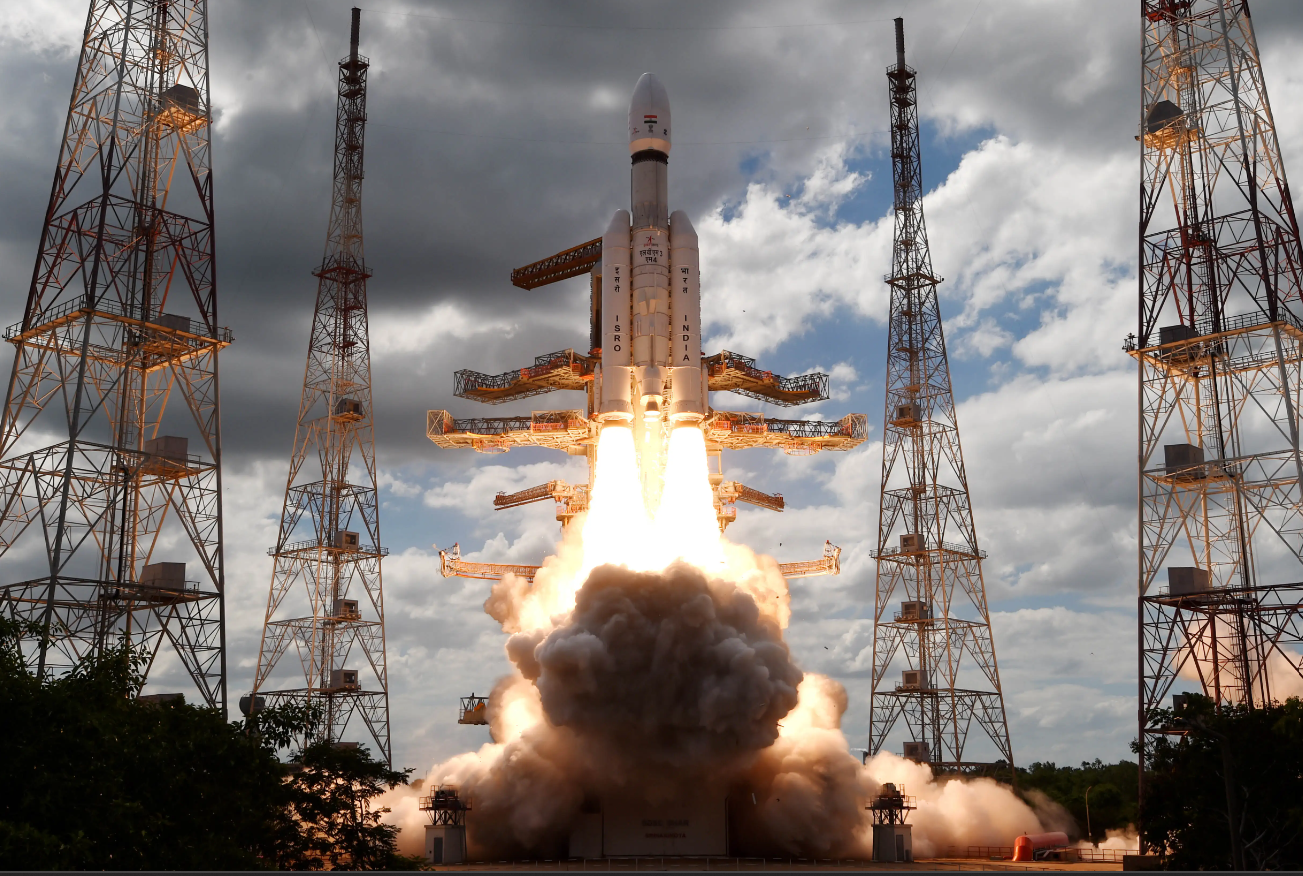

Cosmox Blogs
Chandrayaan 3: The Venture To The South Pole of Moon
After the slight miscalculation of Chandrayaan 2’s landing, it sent the entire ISRO to a grave regret and misfortune for then next 4 years. But they gave a huge bounce back and set history with the successor of Chandrayaan 2 the Chandrayaan 3.
Mission Objectives
Chandrayaan-3’s primary objective is to execute soft landing on the lunar surface. Unlike its predecessor, which included an orbiter, a lander, and a rover, Chandrayaan-3 comprises only a lander and a rover. The omission of an orbiter is strategic: the Chandrayaan-2 orbiter remains operational and continues to relay valuable data from lunar orbit.
The mission’s specific objectives include:
1) Demonstrating a Soft Landing: Achieving a successful and precise soft landing is critical to further lunar exploration and potential future missions.
2) Deploying a Rover: The rover, equipped with scientific instruments, will analyze the lunar surface and conduct experiments to understand its composition.
3) Conducting Scientific Experiments: The mission will focus on surface science, including studying lunar soil and rock samples, to gain insights into the Moon’s geology and its potential for future human exploration.
Mission Components
Chandrayaan-3 consists of two main components:
Lander (Vikram): Named after Vikram Sarabhai, the father of the Indian space program, the lander is designed to execute a controlled descent and deliver the rover safely to the lunar surface. It is equipped with advanced landing technology to ensure precision and stability.
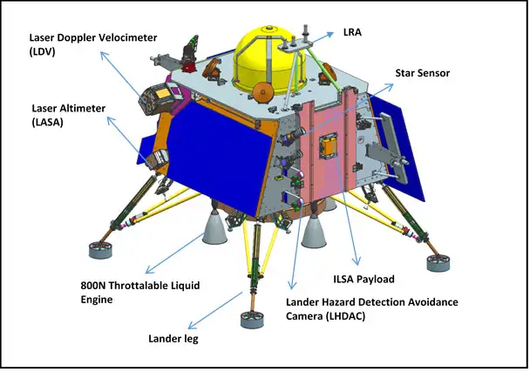
Rover (Pragyan): Pragyan, meaning ‘wisdom’ in Sanskrit, is the rover designed to traverse the lunar surface and carry out scientific experiments. It is equipped with a suite of instruments to analyze surface composition, temperature, and topography.
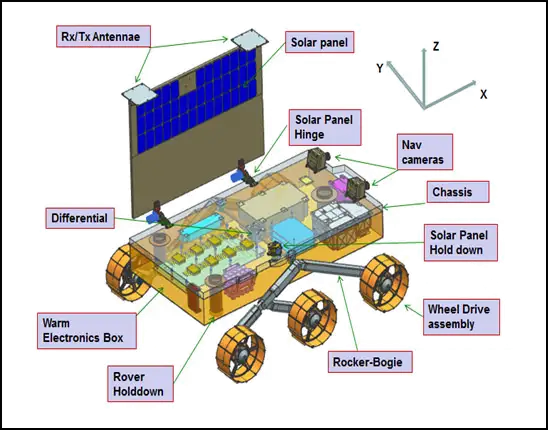
Technological Innovations
Chandrayaan-3 incorporates several technological advancements and refinements: 1) Enhanced Navigation and Control Systems: The lander features improved guidance, navigation, and control systems to enhance its ability to execute a precise landing.
2) Advanced Propulsion System: The propulsion system has been upgraded to ensure a smoother descent and to correct any deviations during the landing phase.
3) Improved Communication: Enhanced communication systems are designed to maintain a stable link between the lander and ISRO’s ground control.
Scientific Goals
The scientific goals of Chandrayaan-3 include: 1) Surface Composition Analysis: By analyzing the composition of lunar soil and rocks, the mission aims to uncover the Moon’s geological history and its potential resources.
2) Lunar Surface Topography: Detailed mapping of the lunar surface will help understand its features and assess its suitability for future missions.
3)Thermal Properties: Studying the thermal properties of the lunar surface will provide insights into temperature variations and the Moon’s thermal history.
Mission Timeline
The Chandrayaan-3 mission was launched on July 14, 2023, aboard a GSLV Mk III rocket. The mission timeline includes several key phases: 1) Launch: The mission was successfully launched from the Satish Dhawan Space Centre in Sriharikota.
2) Lunar Transfer Orbit: The spacecraft entered a transfer orbit towards the Moon.
3) Lunar Orbit Insertion: Chandrayaan-3 entered lunar orbit and prepared for the descent phase.
4) Descent and Landing: The lander initiated its descent towards the lunar surface, aiming for a controlled and soft landing.
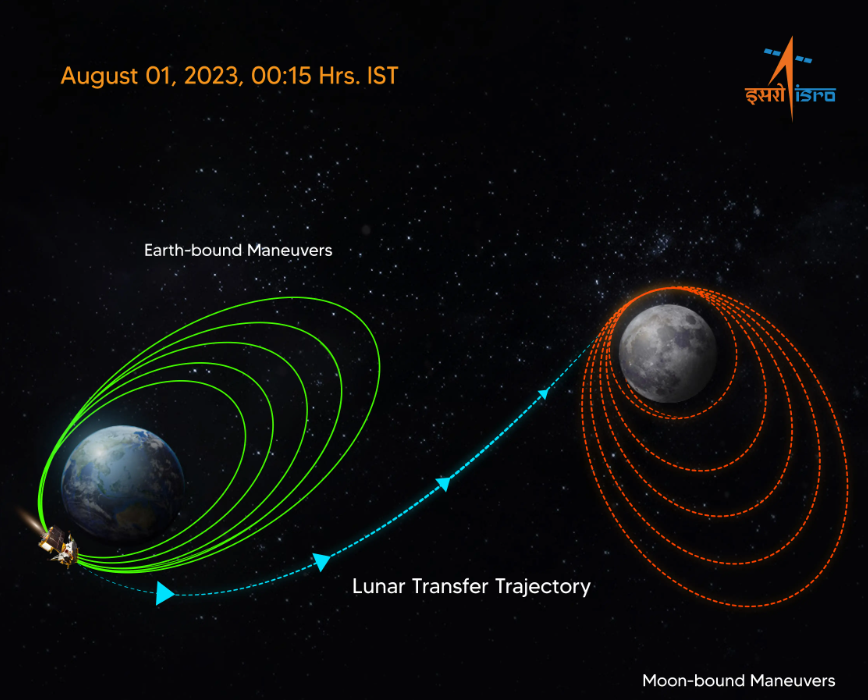
Challenges and Solutions
The Chandrayaan-3 mission faced several challenges, including:
1) Precision Landing: Achieving a precise soft landing on the Moon’s surface requires overcoming numerous technical challenges related to navigation and control.
3) Communication Delay: The vast distance between Earth and the Moon results in communication delays, requiring robust and autonomous systems on the spacecraft.
4) Lunar Surface Conditions: The lunar surface poses challenges due to its rough terrain and extreme temperatures. The rover is designed to withstand these conditions. ISRO has addressed these challenges through rigorous testing and advancements in technology, ensuring that Chandrayaan-3 is well-equipped to handle the complexities of lunar exploration.
Mission life
1) Propulsion module: Carries lander and rover to 100-by-100-kilometer (62 mi × 62 mi) orbit, with operation of experimental payload for up to six months.
2) Lander module: one lunar daylight period (14 Earth days).
3) Rover module: one lunar daylight period (14 Earth days).
Team
-> ISRO chairman: S. Somanath -> Mission director: S. Mohanakumar -> Associate mission director: G. Narayanan -> Project director: P. Veeramuthuvel -> Associate project director: Kalpana Kalahasti -> Vehicle director: Biju C. Thomas
Funding
In December 2019, ISRO requested the initial funding of the project, amounting to ₹750 crores (US$90 million), out of which ₹600 crores (US$72 million) would be for meeting expenditures towards machinery, equipment, and other capital expenditure, while the remaining ₹150 crores (US$18 million) was sought for operating expenditure. Amit Sharma, CEO of an ISRO vendor, said, "With local sourcing of equipment and design elements, we are able to reduce the price considerably."] Confirming the existence of the project, ISRO's former chairman K. Sivan stated that the estimated cost would be around ₹615 crore (equivalent to ₹724 crore or US$87 million in 2023).
Results
The Associated Press, while commenting on the success of the mission, said, "The successful mission showcases India's rising standing as a technology and space powerhouse and dovetails with Prime Minister Narendra Modi's desire to project an image of an ascendant country asserting its place among the global elite."Regarding the results of the water's existence, "There was no word on the outcome of the rover searches for signs of frozen water on the lunar surface".
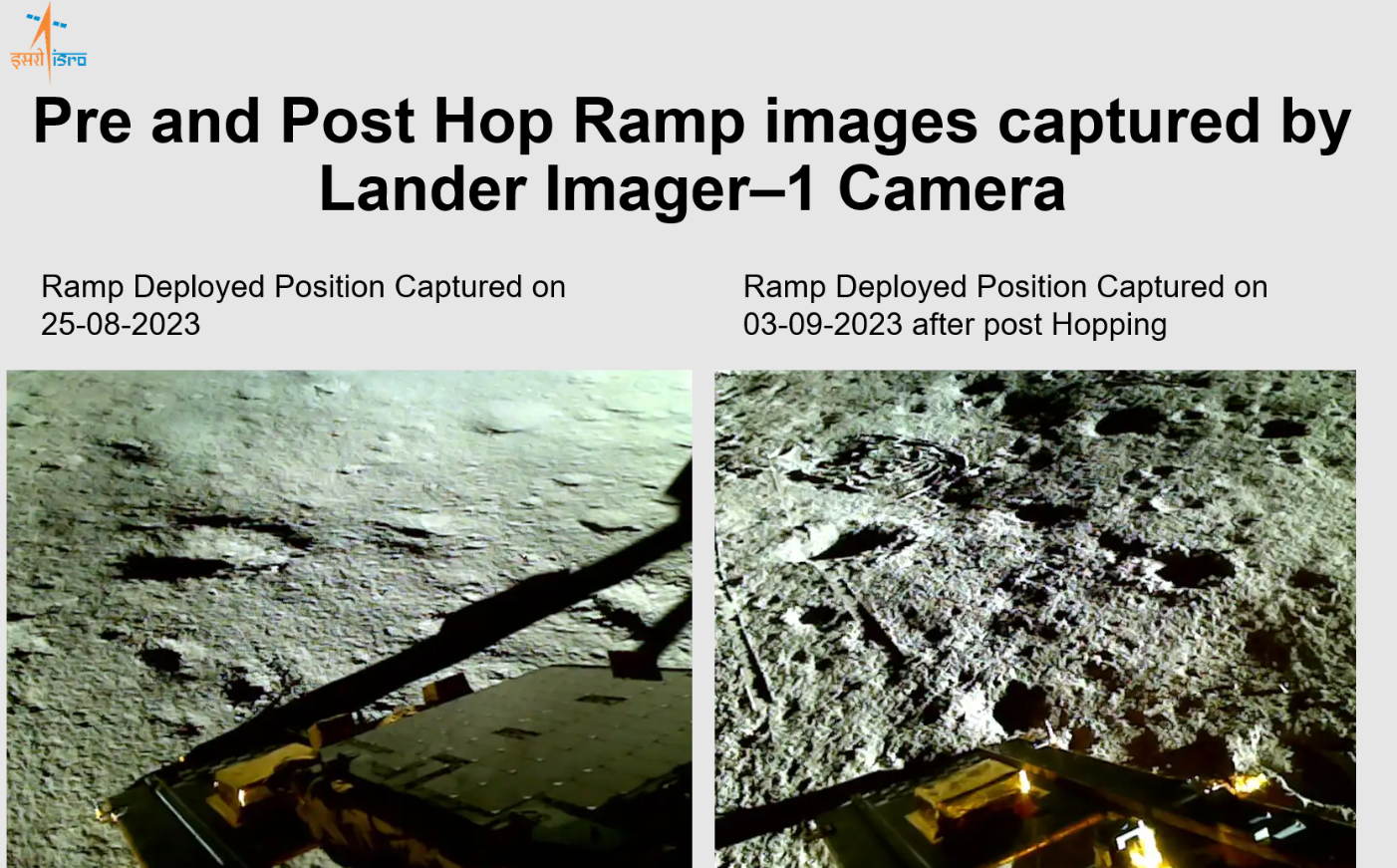
Temperature variation
ISRO also released data from the observations made by ChaSTE (Chandra's Surface Thermophysical Experiment), one of the four instruments present on the lander module. ChaSTE was designed to study the heat conductivity of the Moon's surface and measure the differences in temperatures at different points on and below the surface, with the overall objective of creating a thermal profile of the Moon.
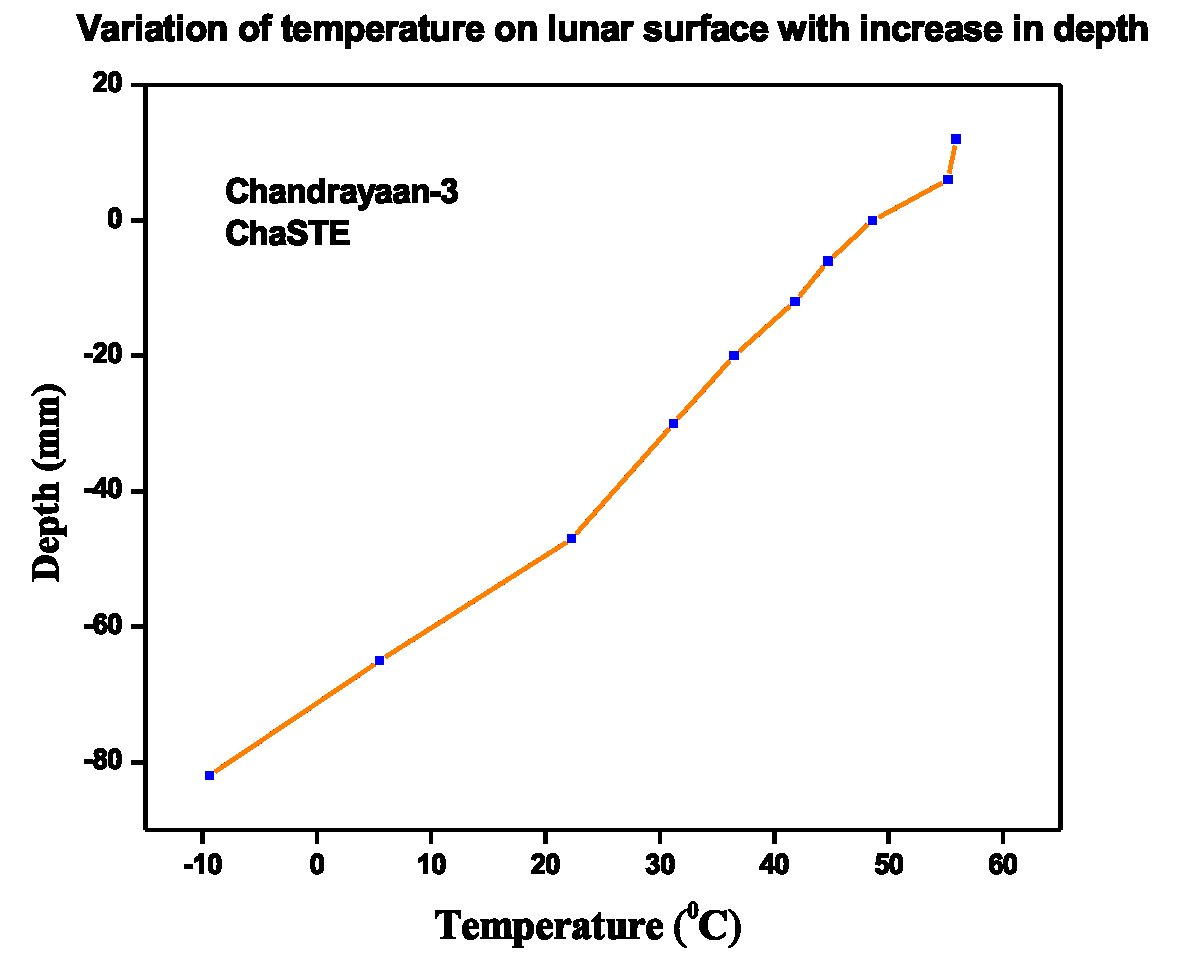
The graph of temperature variation across the lunar topsoil at a point in the solar polar region, as measured by the ChaSTE instrument ISRO scientist BH Darukesha said the high range of 70-degree-Celsius (158-degree Fahrenheit) temperature near the surface was "not expected".
Detection of sulfur
On 29 August, ISRO reported that the laser-induced breakdown spectroscope (LIBS) instrument on board the Pragyan rover has "unambiguously" confirmed the presence of sulfur in the lunar surface near the south pole, through "first-ever in-situ measurements''. The presence of sulfur on the Moon has been known before; however, it was detected for the first time at the south pole by the rover.Noah Petro, a project scientist at NASA, while speaking to the BBC, stated that while sulfur has been known to be in the lunar regolith from Apollo program samples, he described Pragyan's findings as a "tremendous accomplishment". Apart from sulfur, the rover also detected other elements including aluminum (Al), calcium (Ca), iron (Fe), chromium (Cr), titanium (Ti), manganese (Mn), silicon (Si), and oxygen (O). The agency said it is also searching for hydrogen (H).

Pragyan rover detected elements present on the moon.
Plasma measurement
On 31 August, ISRO released plasma density data from the RAMBHA Instrument aboard the Vikram lander. Initial assessments reported relatively low plasma densities above the lunar surface varying from 5 to 30 million electrons per m3. The evaluation pertains to the early stages of the lunar day. The probe aims to explore the changes in the near-surface plasma environment throughout the duration of the lunar day.
Seismic measurements
On the same day, ISRO released data from the ILSA payload on the lander, providing vibration measurements of the rover movement on 25 August, and a presumed natural event on 26 August. The cause of the latter event is a subject of investigation, it is suspected to be a moonquake.
Conclusion
Chandrayaan-3 is a significant milestone in India’s space exploration efforts. A successful soft landing will not only validate ISRO’s technological advancements but also pave the way for future lunar missions and international collaborations. The mission also holds promise for scientific discoveries that could contribute to our understanding of the Moon and its resources. These findings may inform future human exploration and potential colonization efforts. Looking ahead, Chandrayaan-3 sets the stage for more ambitious space missions, including potential lunar bases and interplanetary exploration. ISRO’s continued investment in space technology and exploration will likely lead to further advancements and achievements in the coming years, which will soon set the record for the most remarkable space ventures ever conceived.
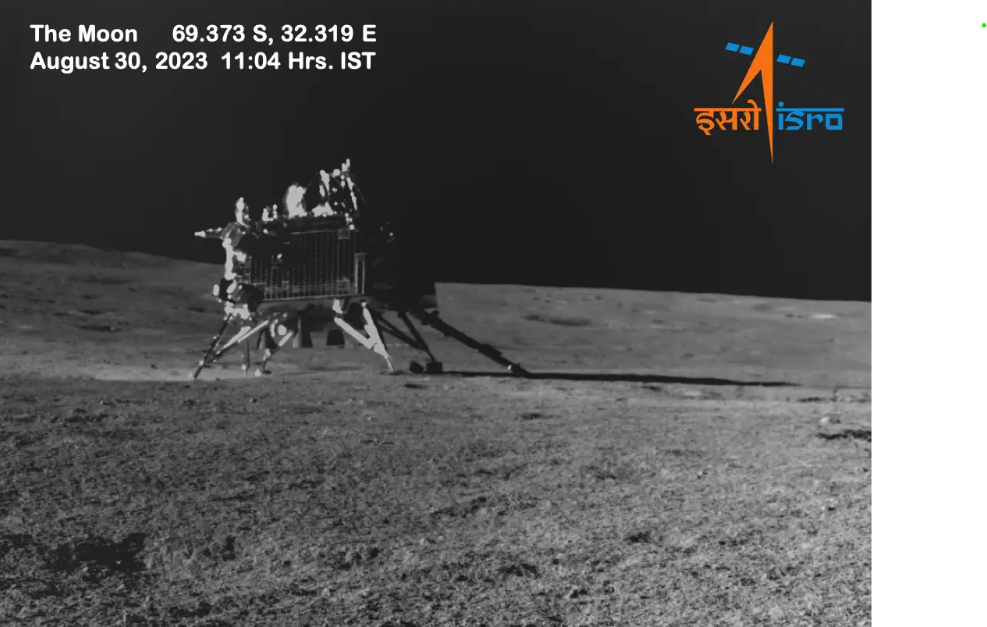

Cosmox Blogs
A non profit organization that works on writing and delivering blogs on cosmology, natural sciences & environment, so that people can learn more about it. We even run a forums page, where our users interacts with each other and discuss about Cosmology, Natural Sciences & Astronomy. We even run an instagram and a youtube channel with podcasts.